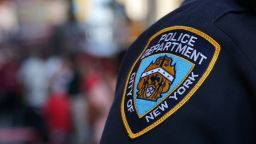Body cameras more accurately captured the number of stop and frisks conducted by New York City police officers but “did not reduce use of force during arrests or produce any changes in policing activity,” according to the findings of a federally mandated pilot program that were made public this week.
The report, the latest from the court-appointed federal monitor charged with oversight of the New York Police Department, determined that body cameras are “a powerful tool for increasing transparency and accountability.”
“This study finds that the placement of BWCs (body-worn cameras) on officers can increase their compliance with department directives to document stops of citizens,” Peter L. Zimroth, the appointed NYPD monitor wrote, adding that cameras can help “… determine whether officers are adhering to the rule of law in their enforcement efforts.”
Zimroth noted that the NYPD already has body-worn cameras, and the results of the study show that the device is not a “panacea.”
The report, an evaluation of the body-worn camera pilot program launched in April 2017, also found that body cameras were not enough. More needed to be done, like community policing programs, to repair the relationship between residents and the police.
In a statement, an NYPD spokesman said the department welcomed Zimroth’s report, but said it “reflects the outdated practices of a year-long pilot” program.
“The NYPD has long since deployed body-worn-cameras for its entire patrol force to realize the benefits of increased transparency and better compliance by officers with the NYPD’s policies and procedures, including those relating to street stops,” NYPD spokesman Alfred Baker said.
Darius Charney, senior staff attorney for the Center for Constitutional Rights, said that body-worn cameras aren’t the powerful tool for increasing transparency and accountability that Zimroth says they are.
“That may have been true in April of 2017, but in those three-and-a-half years, we have learned that not every video that an officer records is being looked at by a supervisor,” Charney said, adding that incidents are being recorded and missed.
The NYPD was mandated in 2013 by Manhattan federal Judge Analisa Torres to start a pilot program for body-worn cameras as a way to fix the racial disparity of the department’s use of stop, question and frisk. The judge’s ruling stemmed from a class-action lawsuit representing potentially hundreds of thousands of people that never asked for monetary damages. Charney was a lawyer in the suit, which sought to have the policy changed.
Shortly after the mandate, the NYPD went ahead and implemented its own body-worn camera program, independent of the federal monitor.
During the pilot program, officers outfitted with body-worn cameras recorded a near 40% increase in the number of documented stop, question and frisk reports completed, according to the report.
But that number increased because those officers were actually documenting the stops, which has long been a persistent problem, Zimroth noted.
The report, the 12th issued by Zimroth since 2013, also found that the while the number of stops increased, the number of civilian complaints levied against officers decreased by 21% and that officers were less likely to neglect to file reports because NYPD supervisors and outside monitors, like the district attorneys, the courts, or the civilian complaint review board, were watching, Zimroth noted.
“This increased transparency is one way that body worn cameras could be useful in reducing persistent problems with unreported or unlawful citizen stops,” Zimroth said.
Christopher Dunn, legal director for the New York Civil Liberties Union, said the takeaway from the report is that the body cameras did not adjust the behavior of police officers since there was no statistical change in the number of arrests with force, summonses, domestic incident reports and citizen crime complaint reports.
“We’re still very early in the use of body cams so it remains to be seen how it changes policing,” Dunn said. “Nobody should think that body cams are the solution to police misconduct. They are not. They can help, especially with documentation, but many things have to happen first.”
The results of that initial pilot program was supposed to determine whether the NYPD would supply officers with body-worn cameras, but police officials decided to roll out their own plan for equipping officers with the devices, long before this report was filed.
Now, more than 22,000 officers currently wear body cameras, according to the report. Those cameras generate approximately 120,000 to 130,000 new videos each week, which represents the largest deployment of body camera technology in the United States, according to Zimroth.



